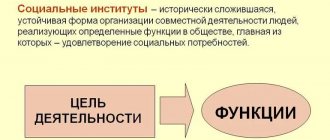One of the important human needs is the need for communication. In order for us to fulfill our social functions, we need to communicate with our own kind. A lack of communication can lead to consequences such as apathy, depression, depression and even stress. A long-term lack of opportunity for communication for a healthy person is fraught with a terrible outcome - an irreversible mental disorder.
But fortunately, we are all collective beings, which makes it possible to contact others every day, thus fulfilling our need for communication. We communicate with family, co-workers, friends. Each of these social groups is a collective to which we belong.
The team and its functions
A team is an association of people created on the basis of common goals, aspirations, and objectives. The purpose of such social groups is to achieve a specific mission or perform specific functions.
Not every group of people has the name collective. This is an average social group. It is generally accepted that the number of people in a team often ranges from three to thirty to forty people. Let’s say that the state is also a social community, all members of which are connected by a common goal and the same characteristics, but no one calls the state a collective.
The team, as a constituent element of an organized society, plays an important role. Its main functions are:
- Educational - the team regulates the behavior of all its members.
- Organizational - each team is a subject that manages its activities, and any process with proper organization becomes more effective.
- Stimulating – the formation of moral incentives for socially useful deeds.
- Economic is a function of the collective that allows for the unification of labor activities, as a result of which cultural and material values arise.
What is a team
A team is a narrower concept than a group.
A group goes through several stages of development during its life. And the team is one of them - the most perfect and highly organized.
Not every group is capable of becoming a team. In order to better understand the nuances of this concept, it is worth considering in more detail the development of a group to the collective stage.
Initially, people united by a common goal gather in a group. They don’t know each other well yet, so they are in no hurry to get closer and open up completely. At this stage, rationalism, study of other group members, and adaptation to new conditions prevail. The subjects do not yet show their weaknesses and feelings, do not open their souls to each other, and try not to openly demonstrate the characteristics of their personalities. During this period, people try to navigate and find their social role in the association.
At the next stage, when group members already know each other better, “grinding in” begins. There is a clash of opinions and interests, which inevitably leads to the emergence of conflicts and, accordingly, the search for ways out of them and the generation of optimal solutions. This stage is characterized by criticism, overcoming prejudices regarding certain group members, and bringing together subjects with similar values and views. Subject to a competent approach and skillful adjustment of actions, conditions arise for the emergence of a team.
A team is characterized by the presence of trusting relationships between its members. People already know each other well; they have overcome a lot together. Therefore, communication becomes open, relationships are strengthened. Formalism is replaced by warmth and goodwill. The rivalry characteristic of the initial stages is replaced by reasonable cooperation.
You may also be interested: EA7 – what is it?
An example of a team in society
Each of us belongs to several teams without even thinking about it. The very first social group in which we grow up and are brought up is our family. Later we get to know our group in kindergarten, the school class, and the student community. In childhood and adolescence, almost everyone becomes a member of hobby clubs, this could be a vocal choir, a dance group, or a sports section. Adults spend most of their lives at work, all the while being in a team of employees.
The formation of a personality can be influenced simultaneously by several groups of which it is a part.
Signs of a collective
The formation of a team can be carried out cohesively and almost simultaneously (formal teams) or systematically (over some time). An organized group of people becomes a collective when it begins to acquire characteristics that distinguish it from other social structures. These signs are:
- The goals and objectives of the group must be approved by society.
- Joint activities aimed at achieving them.
- The presence of a differentiated system of interpersonal relationships between team members.
- Availability of self-government bodies.
- Mutual responsibility for actions taken in the team.
The concept of a team and requirements for it
Definition 1
A team is a certain group of people united for the purpose of joint activities that are necessary and important for a significant number of people, not necessarily members of this team.
In a team, special interpersonal relationships are formed, characterized by a high level of cohesion, personal self-determination, collectivist identification, high self-referentiality of team members to each other, and objectivity in taking responsibility for the results of joint activities.
The following requirements are imposed on the team:
- successful solution of the tasks assigned to it, that is, efficiency in relation to the main activities of a certain team;
- high morals;
- good human relations within the team;
- creating opportunities for each member to develop as an individual;
- creativity;
- an established differentiated system of personal and business relationships built on a high moral basis.
Finished works on a similar topic
Coursework The concept of a team in psychology 400 ₽ Essay The concept of a team in psychology 220 ₽ Examination The concept of a team in psychology 220 ₽
Receive completed work or specialist advice on your educational project Find out the cost
Types of groups
Social groups can have many differences. The main ones form the basis for the classification of groups.
According to the method of organization there are:
- Formal – purposefully created teams whose activities are documented. As an example, a formal team is the employees of an enterprise.
- Informal - arising independently. For example, a group organized for a hiking trip or excursion trip.
Based on the time of action, the teams are divided into:
- Permanents are a more durable social group that exists for a long time and is characterized by strong ties between its members.
- Temporary - basically such organizations disappear immediately after achieving the designated goal.
Team life cycle
Note 1
The process of forming a group moves along a sinusoidal line, and not along an ascending straight line, experiencing ups and downs.
There is a certain dependence: any group on the path of its development as a collective necessarily has a period of temporary decline. At the initial stage of the team’s development, there is a rise, then followed by a noticeable decline. While maintaining oneself as a group, an ascent follows again, but to a level lower than the original one. A temporary psychological decline is a consequence of the transformation of interpersonal relationships between group members. Initially, they are built on the basis of emotions, and then acquire meaning, the business qualities of the group members. These qualities may vary. This leads to certain friction in relationships. Successfully overcoming these tensions takes the team to a higher level of development.
Have questions about this topic? Ask a question to the teacher and get an answer in 15 minutes! Ask a Question
Who is a leader in a team?
The presence of a leader is one of the features and distinctive features of any team. Formal teams need leaders who can properly organize and control purposeful activities.
Even if the main one is not approved by internal rules or documents, sooner or later in any organized association of people the one who will have greater influence on the rest of its members involuntarily stands out. Such a person is considered an informal leader.
Socio-psychological climate
The team is the basis for the formation of the personality of each of its members. In each team, a unique socio-psychological environment is created, which in the future can affect the existence of the team and the performance of its assigned functions and tasks. The same situation has a direct impact on all members of the social group without exception.
Establishing a psychological atmosphere in the team is the most important task of the organizers, group leaders and each of its participants.
The socio-psychological climate has three components:
- Social climate is determined by how each member of the team observes the norms, rules and responsibilities.
- Moral climate is determined by the presence of moral values common to all individuals included in the team.
- Psychological climate is the atmosphere that arises between team members in the process of their direct contact.
Each of us, as part of a team, should try to contribute as much as possible to the formation of a favorable climate, because in the future this socio-psychological environment will directly influence us and become the basis of our mood and state of mind.
Group: what is it?
A group is a certain number of people separated from society according to certain characteristics. There are relationships between these individuals, a distribution of roles and responsibilities. Each of them is aware of belonging to the group and has certain expectations regarding the actions of their classmates. Usually in such associations there is a clear leader.
Each group has its own psychological climate. Gradually, a system of general norms and sanctions emerges in such associations. Group members are united by goals and aspirations. In the process of life of the association, each of its participants develops a list of responsibilities and functions, the quality of which determines the success of the entire conglomerate.
In groups there is such a thing as group pressure. Under its influence, members of the association can even change some of their attitudes and beliefs.
A group member can only be a subject who is capable of coordinated actions.
Each group has its own goals. They influence the characteristics of the organization: its size, structure, lifespan. The effectiveness of a group is largely determined by the type and quality of relationships that exist within it.
Groups are classified according to different criteria:
- Status: formal (that is, officially created - a class, employees of one department, a university group, etc.) and informal (a group of friends, for example);
- Size: large (religious and territorial groups) and small (4 employees working on one project);
- The nature of the relationships: contact (those in which communication actually occurs) and conditional (in which people do not directly contact each other).
You may also be interested: Discount - what is it?
A group can break up for various reasons: achieving the goal of its creation (obtaining a diploma, for example) or the impossibility of the continued existence of the association due to an unhealthy internal climate, the emergence of many contradictions between participants, etc.









